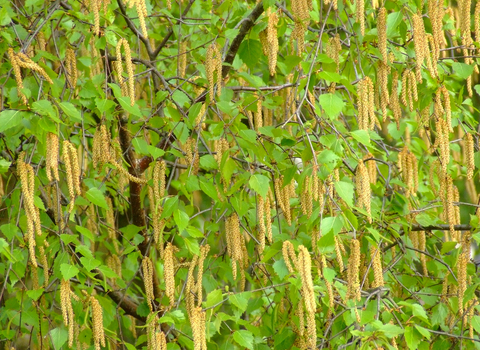
©Pieter Edelman
Downy birch
A spindly tree of heathland and moorlands, and damp soils, the Downy birch is well known for its paper-thin, white bark. It is so-called for the hairy stalks from which its leaves grow; the Silver Birch is hairless.

©Pieter Edelman